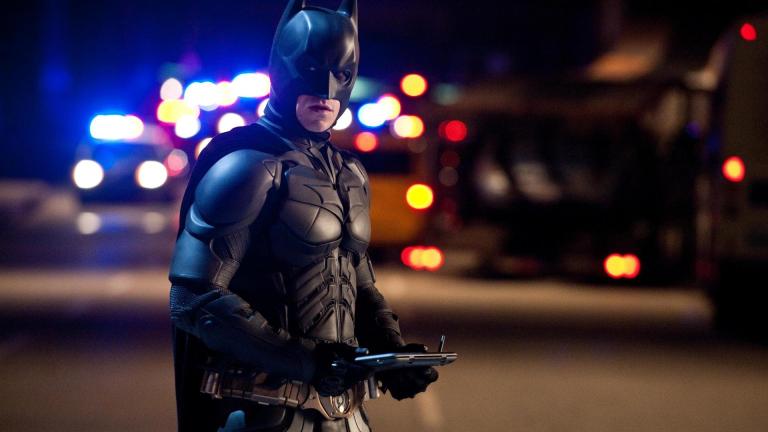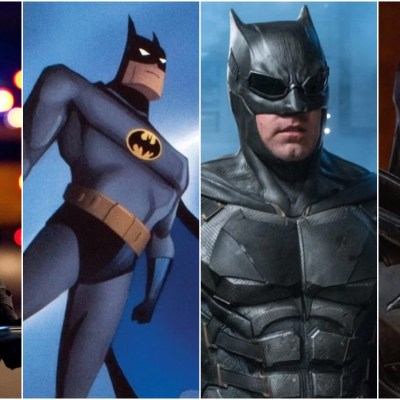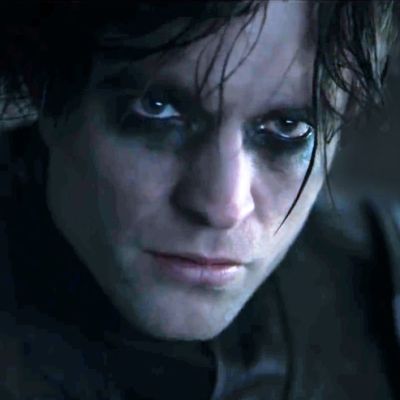What Did Batman Do Between The Dark Knight and The Dark Knight Rises?
We consider just what Bruce Wayne got up to between The Dark Knight and The Dark Knight Rises. We know it was more than just shuffling around the house…

The Dark Knight not so much glided back onto cinema screens in 2012 as he hobbled across them. With a scraggly, unkempt beard and a bathrobe acting as his cape, Bruce Wayne appeared more like how one imagines Christian Bale exists between gigs than Batman at the start of The Dark Knight Rises. He appeared like an invalid whose great adventures were behind him.
In retrospect, this is probably not the version of the Caped Crusader fans expected to find after The Dark Knight’s thrilling finale. At the close of what many still consider to be the high water mark for superhero movies, Batman has agreed to take on the burden of Harvey Dent’s sins, framing himself as a murderer and saving Gotham City from cynicism through a veil of lies. Yet it’s not really a sad ending. Gary Oldman’s Jim Gordon even pens a triumphant eulogy for the superhero’s fallen image. The Batman’s become “a Dark Knight.”
After the film concluded, many fans began speculating just what a third chapter of the Christopher Nolan directed and co-written Batman films would look like: the police at war with Batman? The rise of a criminal underworld of masked freaks like Joker and Batman, embracing the chaos unleashed by their fight? Maybe we’d get to see Batman tackle the Riddler, a foe almost as mentally taxing as the clown.
None of these came to pass, however, as made exceedingly clear in the first seconds of Bale’s introduction in The Dark Knight Rises. Eight years have passed in the film’s narrative since last we saw our hero, and Bruce is now disheveled and broken, haunted by ghosts while living like one in the shadows of Wayne Manor. Prior to directing Batman Begins, Nolan dreamed of making a film about Howard Hughes’ final years: the period when the millionaire aviator, film producer, and mad man succumbed to his neuroses and obsessions. Rises not so subtly revisits that iconography, with Selina Kyle (Anne Hathaway) even expressing disappointment over Citizen Wayne not having Hughes’ long fingernails.
To many moviegoers, particularly fans, this is apparently all Batman’s been doing for the last eight years: living like a recluse and leaving the burden of saving Gotham to the GCPD. However, given all the context clues in The Dark Knight Rises, this is hardly accurate.
Bruce Wayne’s Greatest Crusade
While Nolan’s third Batman movie begins with Bruce Wayne fully entrenched in his traumas—the loss of his parents, his murdered childhood love, Rachel Dawes, and an overwhelming sense of despair about the state of the world—he didn’t immediately hang up the cape at the end of The Dark Knight and start growing the beard. In fact, more than just obsessing over “saving Gotham,” Bruce moved on to trying to save everyone.
The timeline is never fully explained, but various scenes between Bruce Wayne, the woman who calls herself Miranda Tate (Marion Cotillard), and other members of the Wayne Enterprises board reveal Bruce Wayne only gave fully into his demons about three years before the events of The Dark Knight Rises.
“You have a practiced apathy, Mr. Wayne,” Miranda says when she sees Bruce has stepped out of his cave, literally and figuratively, and is now at a charity event. “But a man who doesn’t care about the world doesn’t spend half his fortune trying to save it, and isn’t so wounded when it fails that he goes into hiding.” In another scene, she clarifies the timeline further when she tells Bruce (and thereby the audience), “Three years ago, a scientist published a paper on weaponized fusion reactions. One week later, your reactor started developing problems.”
When these details are fully considered, they paint a tragic portrait of Wayne’s isolation. In Nolan’s The Dark Knight Trilogy, Bruce Wayne never imagined Batman to be an indefatigable superhero who valiantly fights an endless war on crime. With the filmmakers’ quest to ground their Batman in verisimilitude—which is to say make him feel real even as his exploits are far from realistic—they opted to depict the character as neither crazy or misanthropic. He did not only put on the cape to soothe his fractured psyche, and he doesn’t get his jollies from beating up the desperate poor every night… a grim implication for a “grounded” interpretation of a billionaire patrolling “dangerous neighborhoods” looking for a fight.
As Bruce tells loyal butler Alfred (Michael Caine) in Batman Begins, “[I’m coming back] as long as it takes. I’m going to show the people of Gotham their city doesn’t belong to the criminals and corrupt.” In his way, Bruce viewed the Batman as akin to a political campaign. Batman’s a symbol to galvanize the better angels of Gotham around an idea of anti-corruption and anti-organized crime reform. And like a political operator, Bruce built a network of allies and true believers to implement incremental change through the system. But as the saying goes, the road to Hell is paved in good intentions.
After several years of Batman-ing, Bruce has inspired copycat vigilantes who got themselves killed and a nihilistic anarchist who called himself Joker, a glorified terrorist who did irreparable harm to Gotham’s institutions, its morality, and the public trust. Still, Bruce Wayne had a desire to use his wealth to improve the world, and not just his own mood. Hence instead of spending “half his wealth” solely on an ego-stroking war on crime, he invested in building a clean energy fusion reactor.
While it seemed like an almost incidental plot point in 2012, the increasingly dire effects of climate change with each passing year makes the fantasy of powerful nuclear fusion ever more appealing. A nuclear fusion reactor that actually produced comparable amounts of energy to modern nuclear power plants (which run via nuclear fission) would mean a much cheaper power source, as well as one that did not have the drawbacks of nuclear fission, including dangerous radioactive material that must be disposed of for millennia, and power plants that run the risk of melting down.
In Nolan’s fantasy action movies, Wayne Enterprises spent hundreds of billions of dollars on “some save the world vanity project,” as one of Bruce’s rivals puts it. A clean, cheap, and massive nuclear fusion reactor could be a silver bullet for curbing carbon emissions around the world, and a chance to stop something far scarier than supervillains.
Yet after five years of investment, it resulted in more chaos. A scientist’s paper in a professional journal reveals Wayne’s dream machine was also a weapon in the making. Indeed, that’s exactly how Tom Hardy’s Bane uses it during the second half of The Dark Knight Rises. Like the abstract idea of Batman before it, the good intentions baked into Wayne’s nuclear fusion miracle result in more death, more destabilization, and more chaos.
The man with an obvious hero complex failed again. Only then does Bruce give up on the world and indulge his myriad traumas.
Batman Returns Off-Screen?
That is how Bruce Wayne spent five of the eight years between The Dark Knight and The Dark Knight Rises. However, that doesn’t mean there was not also room for Batman. While the canonical text of the film states no one has seen Batman in eight years, there is reason to believe Bruce Wayne did not hang up the cowl on the night Harvey Dent died.
In another scene in Rises, rookie cop John Blake (Joseph Gordon-Levitt) recalls the myth that grew around the night Harvey Dent died. Blake says it was “the last confirmed sighting of the Batman [before] he then vanishes.” But confirmed is the operative word here since there are little things that don’t line up between the two movies that fit this narrative. For starters, there is the swanky Batcave sitting beneath Wayne Manor. When we first see it in the third film, finally renovated after primarily being a long lost historical site from the 1800s in Batman Begins, Bruce is perched at a bank of computers, trying to figure out the identity of Selina Kyle.
“You haven’t been down here in a long time,” Alfred says to his surrogate son. The implication is that in some earlier time, Bruce would spend days in the Batcave. Why would he if his war on organized crime was over? Why build an entire second Batsuit in the cave to complement the one he keeps hidden in his off-site location if he’s done? The answer is that he wasn’t. At least not for some months or years after the events of The Dark Knight.
Throughout the movie, memories about the violent days after Two-Face’s death and the passage of the Dent Act abound, with all the characters describing it as a “war.” It seems plausible someone as obsessive and exacting as Bruce Wayne would want to participate. In fact, it’d be odd if he did not. Embracing hidden and more surreptitious tactics after becoming a public enemy might also explain how Batman injured his knee so badly between The Dark Knight and The Dark Knight Rises that he needs a brace to hide the limp.
It also might explain why no one bats an eye at Selina Kyle’s cat-themed costume. While no character calls the femme fatale with a heart of gold “Catwoman” in the film, she isn’t afraid of embracing the theatricality of her catlike ears either. She even hisses, “Cat got your tongue?” to a mark. The impracticality of this entire aesthetic seems inspired, at least in part, by the Batman. While there is never a line of dialogue confirming this, Hathaway and an uncharacteristically restrained Nolan rely on inference to get the point across.
Like Jim Gordon, Catwoman is given a moment to pause in what she’s doing to marvel at the television when news of Batman’s return breaks. And when she hitches a ride in the Batman’s sci-fi aircraft, she steals a glance at her surroundings when he’s not looking, smiling to herself about being in the same space as an apparent childhood hero. Indeed, Selina would’ve been a teenager during the events of Batman Begins and The Dark Knight, and like perhaps so many other members of the next generation of criminals and adventurers, her imagination took flight with news reports of a man dressed as a Bat jumping off rooftops.
It returns to the theme of “escalation” from The Dark Knight, with the Joker saying to Batman, “You’ve changed things forever.” At the beginning of that film, the Bat was still fighting mobsters; by the end he was facing clowns in war paint. The transition was painful for Gotham, but no one seems to think it odd anymore for a famed cat burglar to turn her goggles into cat ears. It makes you wonder if there were any more elements of a rogue’s gallery in the interceding years before the Dent Act brought vaguely unconstitutional order?
This is admittedly speculation. And the kind which reminds us that there were stories that could’ve been told between The Dark Knight and The Dark Knight Rises that we’ll never see. It’s probably this knowledge that disappoints some fans. Before details of Rises’ plot leaked, the nascent comic book Twitter theories of the era imagined Bale’s Batman opening the movie still running from the Gotham City Police, and fighting the next war.
Instead Rises begins with the war over, and Bruce all the bitterer for it. It was a large pill to swallow for fans who dream of Batman as a crusader always ready for the next robbery, mugging, or burning building. They wanted to see Batman fighting serial killers who leave riddles, not as the Phantom of Wayne Manor, and then as a retiree who’s conquered his pain well enough to enjoy a glass of wine in Italy.
For those disappointed, Matt Reeves’ The Batman looks poised to offer the follow-up they wanted a decade ago. But Nolan’s choice to depict a Batman who had the vision to see the big picture, and to then walk away from it, remains satisfyingly singular and whole.


